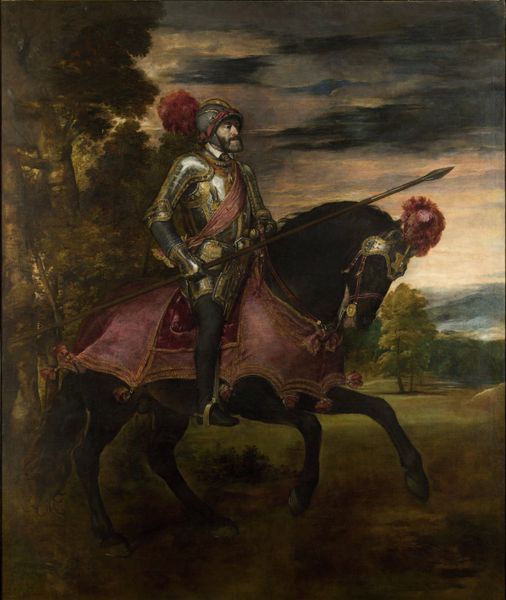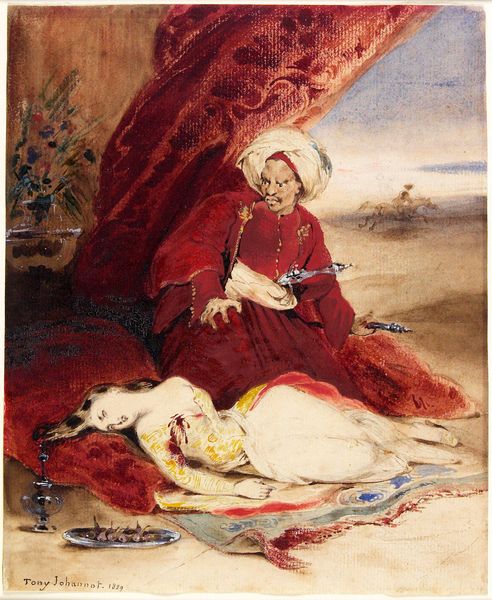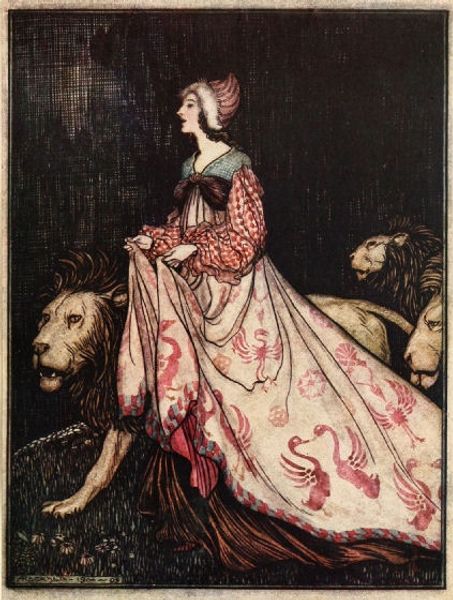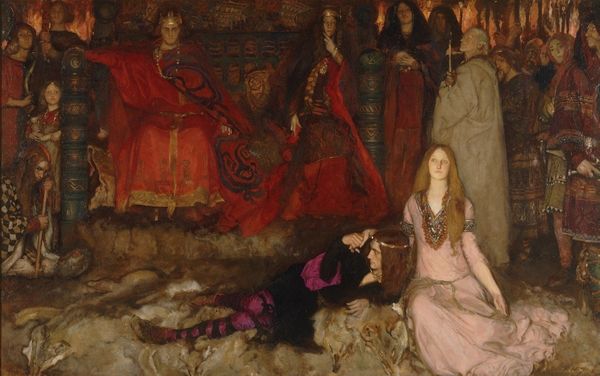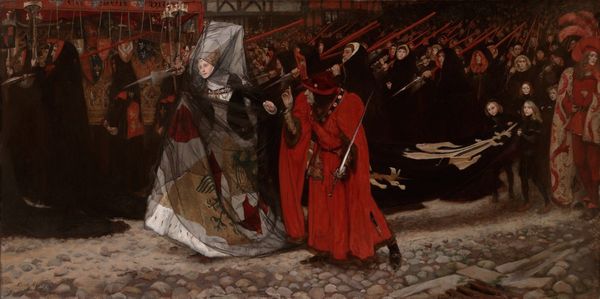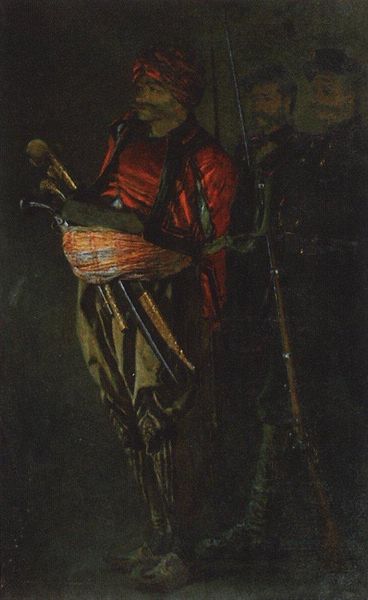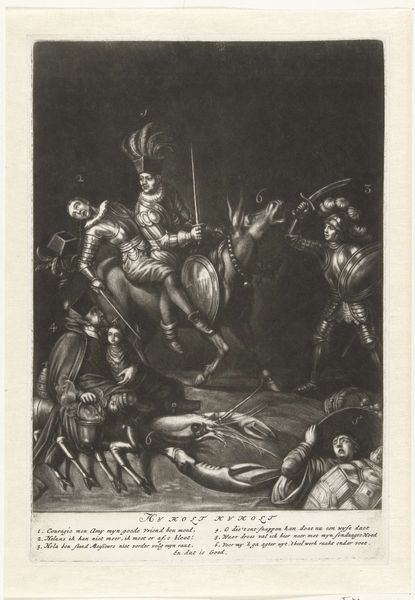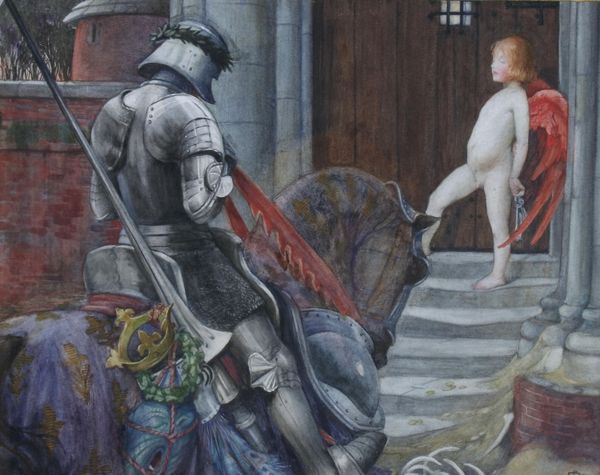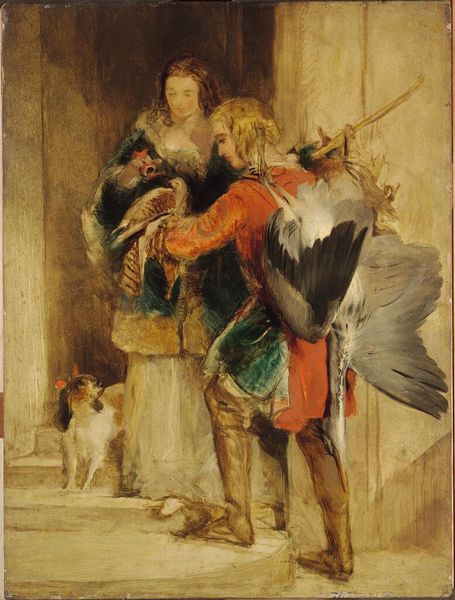
Copyright: Public Domain: Artvee
Editor: This is James Tissot's "Triumph of the Will – The Challenge," an oil painting from around 1877. I'm immediately struck by its theatrical mood; the costuming and figures remind me of a stage production. What is your interpretation of this work? Curator: It’s a potent, visually arresting piece that challenges us to consider prevailing social structures, particularly regarding gender. Note the contrast Tissot creates: a fully armored woman, seemingly victorious over a passive, almost unconscious, figure surrounded by snakes. Editor: What do you mean? Curator: Consider the title – "Triumph of the Will." Whose will triumphs? The armored woman, presumably. But over whom, and at what cost? The woman below appears vulnerable. Tissot stages a scenario rife with power dynamics, placing woman against woman. It is also essential to note that the era valued women to be submissive and agreeable. Do you see other elements that might play into a feminist interpretation of the scene? Editor: The snakes… maybe representing patriarchal oppression, that the armored figure has somehow conquered? The male figures standing back. There seems a distinct air of privilege around them, while the action takes place between these women. Curator: Precisely! And consider, too, how traditional artistic representations often portray women as allegorical figures, embodying virtues or vices. Tissot disrupts that trope, presenting us with complex individuals engaged in a dynamic, perhaps even subversive, struggle. What can we then gather about Tissot’s intent regarding the painting? Editor: I now see that the painting explores how societal expectations can pit women against each other, particularly when power and control are at stake. It seems that we've peeled back some interesting layers, and given a fresh voice to the voiceless within the image. Curator: Indeed, analyzing the art of the past enables critical dialogue on societal values, then and now.
Comments
No comments
Be the first to comment and join the conversation on the ultimate creative platform.


